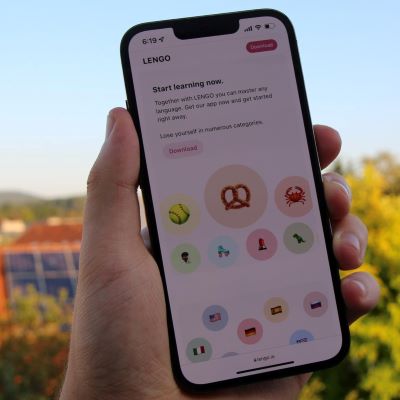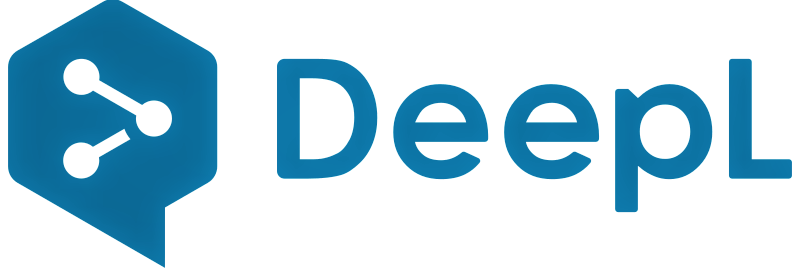Find out more about The Open University's Language courses and qualifications.
If you are trying to learn a language in the age of readily available free online translation tools such as Google Translate or DeepL then you probably know that many teachers’ and learners’ attitudes to these tools are – to say the least – ambivalent. They are often considered an all-too-easy shortcut, or worse, an invitation to cheat. They raise questions regarding the impact they have on the reliability of assessment that aims to measure student performance and achievement. But machine translation tools can do much more than translation, and they can be used as tools to support individual language learning!
 Karina von
Lindeiner-Stráský leads a team of OU researchers that explore the use of online
translation tools in language learning and teaching. Here, she explains how you
can improve your learning with tools like Google Translate, DeepL and others.
Karina von
Lindeiner-Stráský leads a team of OU researchers that explore the use of online
translation tools in language learning and teaching. Here, she explains how you
can improve your learning with tools like Google Translate, DeepL and others.
Using online translation tools in language learning enables you to understand and to produce the language you are studying beyond your usual level. You can access, compare, analyse and contrast texts that you would otherwise not so easily understand, and thus gain a deeper insight into the culture you are studying. But beware, as this can be both a help and a hindrance: a hindrance when you use the tools to cut corners and avoid engaging with the language you are learning, but a blessing when they help you to reflect and improve your understanding and use of language.
Spicing up your language learning with the help of machine translation tools means taking responsibility …
 Spicing up your language learning with the help of machine translation tools means taking responsibility. The key to using digital translation tools to
support your learning is reflection. With the help of these tools, you are your
own teacher, you decide what and how to study and practice. And you can
evaluate yourself and assess your learning.
Spicing up your language learning with the help of machine translation tools means taking responsibility. The key to using digital translation tools to
support your learning is reflection. With the help of these tools, you are your
own teacher, you decide what and how to study and practice. And you can
evaluate yourself and assess your learning.
Learning with the help of online translation tools can be playful. Why don’t you use the tool of your choice for one of these exercises:
- If you already know some of the language you are learning, you can write a short text in that language, for example a formal letter. Use the translation tool to check your text in your first language. Then re-write the same text in a different ‘tone’, for example in the format of an email to a close friend. Translate this version, too. Did you get it right? Do the two versions translated into your native language by the tool reflect the level of formality you have been using? If not, try to alter your texts until you are happy with the translations you get.
- Use the translation tool to derive grammatical rules. For example, use them to translate ten sentences in the past tense into the language you are learning. Are they all translated in the same way? Do different verbs have different ways to form the past tense? Try to detect a pattern, and if you do, use the tool to check whether you’ve made the correct assumption.
Another way to support your learning with online translation tools is their special features. Whether you are teaching yourself independently, or whether you are studying in a teacher-led language course, you can adapt your learning environment to cater for your individual needs. For example, if you are a beginner and starting out on perfecting your pronunciation and building a bank of useful words, then these suggestions may be useful:
- You can use the ‘Star translation’ function in Google Translate to create your own database of words you have looked up – and by doing so, you will put together your own personal learning resource.
-
You can listen to how words or sentences are pronounced (in Google Translate, this feature is the little loudspeaker icon).
And if you are shy and hesitate to speak out in your learning group, machine translation tools are a great support and can help you to overcome the obstacles you encounter. You can pick and choose how to use them and make them work for your individual needs.
But remember: you need to be careful if you are using machine translation tools in assessment. If you want to use them like any other dictionary, to look up words or short phrases, you need to stick to the assessment guidelines and mention them in the reference section as a source you have used, just like you would do with any other source!And keep in mind that machine translation tools are mostly trained to work with whole sentences, so they are actually not the most reliable source for looking up single words, and you might be better off with a (online) dictionary.
So, you might want to start right away and use an online tool to figure out what this little sentence in German may mean:
Viel Spaß beim Sprachenlernen!






Rate and Review
Rate this article
Review this article
Log into OpenLearn to leave reviews and join in the conversation.
Article reviews